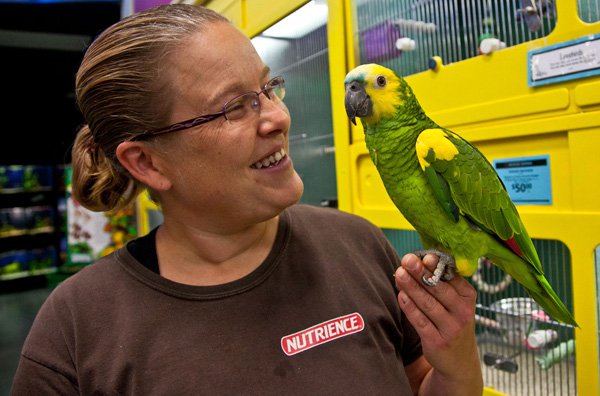
Just as in nature, the diversity of life forms in your freshwater aquarium does not have to be limited to fish. A creature that is commonly found sharing the habitat with fishes is the freshwater aquarium crab.
Crabs can be dependable assistants in the task of keeping the aquarium clean. They are quite effective at eating left over food that has fallen to the aquarium's substrate along with dead vegetation.
With that being said, it seems like it is almost a given that every aquarium should have its fair share of resident crabs. Before one proceeds to go out and buy a freshwater crab, however, there are a few key details that one should be aware of.
The most common crab species found in freshwater aquariums are the fiddle crab and the red-clawed crab. In nature, these crabs are not true freshwater crabs in that they inhabit river outlets where freshwater combines with seawater and forms more of a brackish mixture. Nonetheless, these crabs do well in freshwater aquariums.
The freshwater aquarium crabs should be treated just as you would fish in as far as the selection process is concerned. You need to ask yourself the same questions as you do about fish. How will they interact with the fish inhabitants of the aquarium? How much space do they need individually?
If you plan on having freshwater aquarium crabs it is important that they not be large enough to pose a threat to your smaller fish and that they in turn not be small enough to be threatened by your larger fish. Crabs are omnivores and will eat food flakes, pellets, brine shrimp, leaves, blood worms, but they have also been known to go for smaller fishes. So if you have, or plan on having any bottom dwellers, make certain that there is no significant size mismatch between them and the crabs.
With regards to their space requirements, make certain that there is enough room for each crab to allocate itself one square foot of space on the bottom of the aquarium. To concentrate a large number of crabs in a small space can create territorial aggression and promote crab on crab violence.
Another thing to keep in mind with freshwater aquarium crabs is that they are semi-aquatic, not purely aquatic. That means that from time to time the crab would need to emerge for a stroll on land. When people keep crabs as the sole inhabitants of an aquarium this is easily solved by accumulating the substrate towards one end of the aquarium so as to create a slope and surface area for the crabs to emerge from the water. When they form part of a fish inhabited aquarium, however, this is not a viable option. In these instances it is best to keep a smaller, secondary tank with the substrate sloped as described above and give your crabs a weekly "shore leave" pass for a day or two.
Whether your crab is in the main aquarium or in its "shore leave" tank, it is important to be aware of their highly curious nature. Keep some substrate rocks, aquarium decorations or pieces of driftwood which the crab can use to hide, lift and keep busy. Otherwise, crabs can become anxious and more aggressive against other inhabitants of the aquarium. Also, make certain that the aquarium or "shore leave" tank is covered. Freshwater aquarium crabs, if given the opportunity, will escape their home environment and begin a quest of external exploration.
As with most matters related to a freshwater aquarium, the decision to add crabs or not should be based on your personal preference and the compatibility with the fish in your aquarium. If a decision is made to add a crab, however, one will find them to be a pleasant and useful addition to most freshwater aquarium environments.
 Magnificent Horse fences that elevates ones mount from wall harm
Magnificent Horse fences that elevates ones mount from wal
Magnificent Horse fences that elevates ones mount from wall harm
Magnificent Horse fences that elevates ones mount from wal
 Choosing A Pedigree Puppy
Choosing A Pedigr
Choosing A Pedigree Puppy
Choosing A Pedigr
 We Love Custum Made Dog Collars So Much, We Gave Them Dramatic Names
We Love Custum Made Dog Collars So Much, We Gave Them Dram
We Love Custum Made Dog Collars So Much, We Gave Them Dramatic Names
We Love Custum Made Dog Collars So Much, We Gave Them Dram
 Staying Safe When Out Riding Your Pony On Roads
Staying Safe When
Staying Safe When Out Riding Your Pony On Roads
Staying Safe When
 Can You Really Retrain An Aggressive Dog?
Can You Really Re
Can You Really Retrain An Aggressive Dog?
Can You Really Re
Copyright © 2005-2016 Pet Information All Rights Reserved
Contact us: www162date@outlook.com